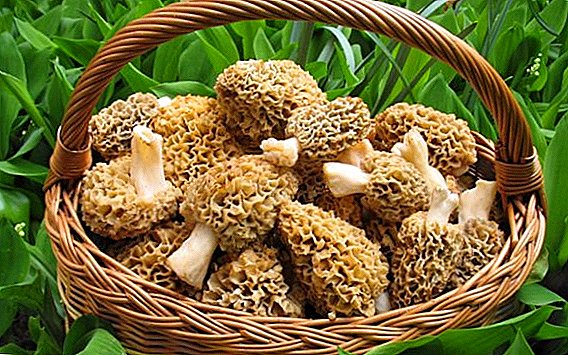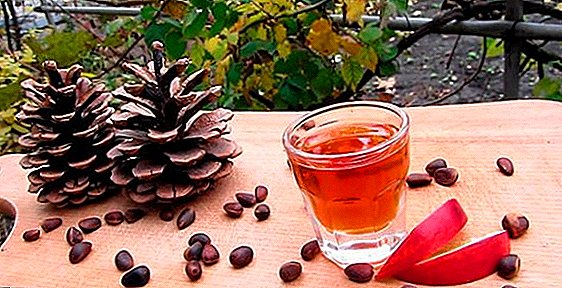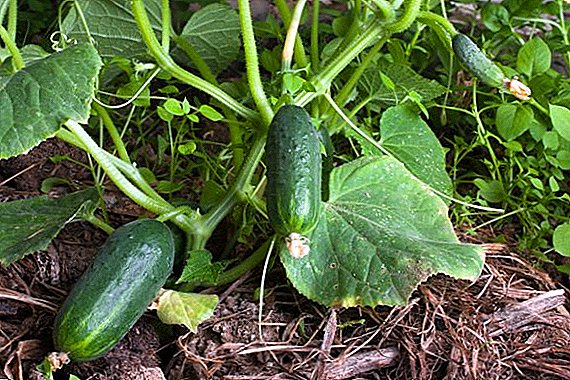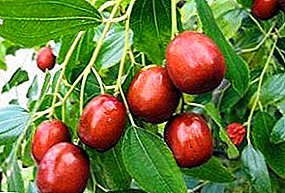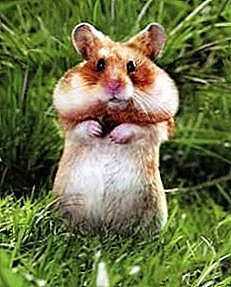
Wild hamsters are quite dangerous animals, their size and appearance are significantly different from those cute animals that many lovers keep at home.
They are completely not manual and pose a danger both for the person himself and for the future harvest in your garden or garden.
Do not underestimate the danger and neglect the protection!
Exterior features of wild hamster and photo
The appearance of the wild hamster has a number of similarities with the domestic representatives of the species, but the sizes differ radically.
Adult male can reach 34 cm (without tail, which has 5 cm), weight up to 700 grams. The female is slightly smaller.
The body of a wild hamster is rounded, the transition between the head and the torso is almost imperceptible. Wool is very dense, there is undercoat.
Ears are small feet short and strong, with hard claws, adapted for digging holes and holes. Teeth strong and sharp, updated throughout life.
Bites are very dangerous, leaving lacerated wounds. May cause infection.
On the face - hard mustache, shiny black eyes. Color varied, but brown and yellow are more common. Rarely spotty, black, white.
If you want to know what a wild hamster looks like, a photo gallery will help you with this:





Distribution and reproduction
Wild Hamster - very unpretentious animal, he is not afraid of arid steppes, mountains, forests, neighborhood with a man. It is distributed almost everywhere, from Europe to China.
The harsh climate of the pest does not frighten. He is safely hiding in his hole. The main thing for rodents is to have something to eat, so they usually settle near fields, gardens.
They are selected closely to the cottages and villages to make stocks at the expense of the harvest in the gardens. Farmers are suffering from these pests everywhere, inventing new ways to fight.
Important! Rodents breed very actively, they reach sexual maturity at the age of 20 weeks.
One male usually creates families with several females. Cubs are born blind and bald, however grow very fast and soon they themselves are included in the population replenishment process.
The female hamster gives birth to offspring in the spring, sometimes it can give birth several times a year, under favorable conditions. They reproduce exponentially in the litter usually 6 - 18 cubs.
Lifestyle
Most these animals are active at duskduring the day hiding in a hole. In winter, it hibernates, but shallow, occasionally wakes up to refresh itself from its reserves.
Out in March - April. Males are friendly only to females during the breeding season, the rest of the time aggressive to everyone, including man.
The size of the enemy is not important to the hamster.. Lifestyle single, protect their territory. Attack on "unwanted guests."
The main differences from other rodents
They have several significant differences from other rodents, which is important to consider when fighting and destroying, so as not to expose themselves to danger.

- The presence of cheek bags. This is a special elastic folds of the skin on the inside of the cheeks, which swell several times and can hold up to 50 grams. In them he carries food and building material for the burrow;
- The stomach of this animal is divided into a foreleg (in which food is broken down by enzymes and acids) and the stomach itself (digestion takes place with the help of gastric juice);
- Large size and manifestations of aggression - the main difference, representing a danger to humans and animals.
Harm to man - farmer
It is not difficult to imagine what do great harm wild hamsters agriculture, farmers, gardeners and gardeners!
The huge number of pests, the ability to adapt to any conditions allows them to flood all the nourishing areas, and the ability to build complex holes makes them difficult to catch and destroy.
Everything that is grown in garden and garden crops is a delicacy for them, and hamsters will not give up so easily. Farmers have a serious struggle for their crops!
Besides, wild hamsters can bite humans or pets and cattle that most likely lead to infection with various infections (up to 30 species), and possibly death.
Fleas that live on them and suck blood are no less dangerous. Rodents are a serious threat, but the more important is the struggle!
Ways to fight and protect
Nowadays, both modern methods of struggle and protection with these rodents, and proven old ones are used. Here are the main ones:

- Flooding holes. It is necessary to find all the exits, barricade them and pour water into the hole until the animal crawls out of a single hole. There you can catch him. Minus: be careful if you found all the emergency exits from the hole, otherwise the hamster will disappear.
- Digging holes and manual fishing. Minus: very laborious and dangerous.
- Pets, cats and dogs, prey on rodents. Minus: hamsters are very large, not every cat will cope. A dog can trample the whole garden. In addition, the hamster can bite and infect them.
- Various traps, live traps. Minus: it is difficult to trace where he can get out and where to place them.
- Scattering poison bait. You can use rat and mouse poison. Minus: not the fact that most individuals will eat it, especially the number of pests is quickly restored.
- The use of noise and ultrasonic repeller. Minus: it is difficult to place them in a large area and quite expensive.
The big problem is that hamsters are very agile and cunning animals, besides fearless. Catching or scaring away a hamster in the country is not so easy.
Dear gardeners and gardeners! It is necessary to try all methods of struggle and destruction, until you succeed!
Otherwise, you risk not only being left without a crop on your farm, but also your own health and life, as well as your loved ones!




